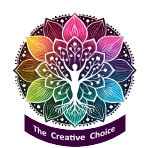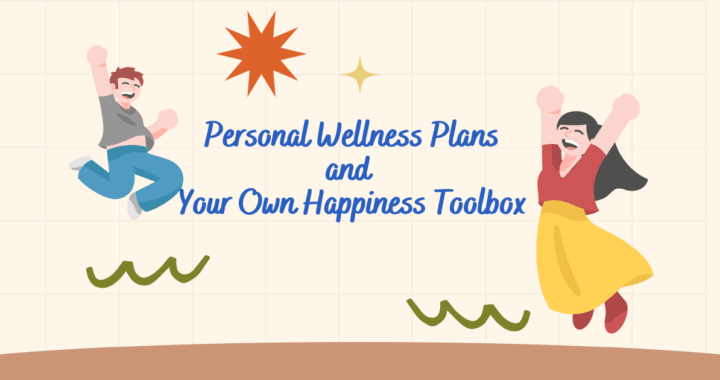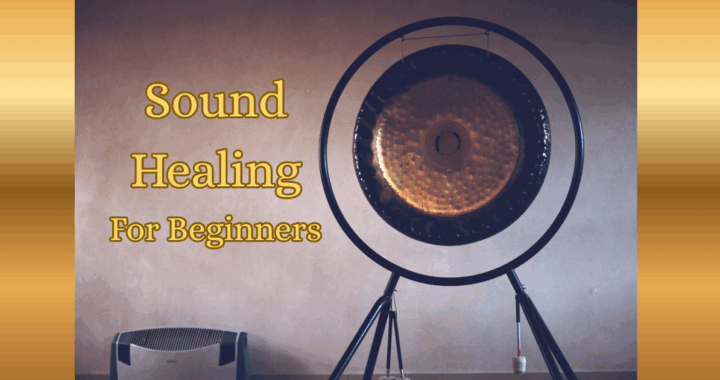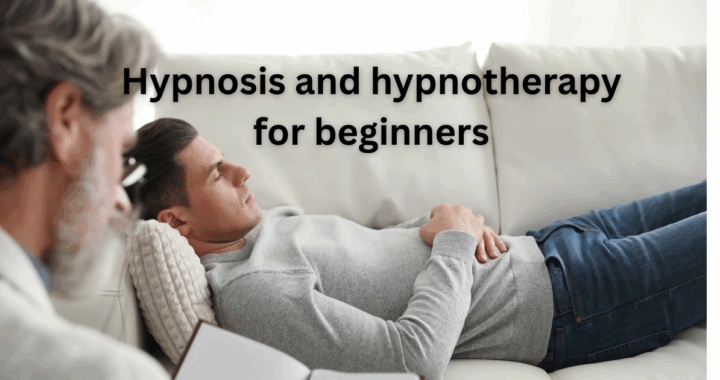
Meditation is something that everyone can do, at most times of the day and it can have a wonderful effect not only on your mental health but also on your physical health as well.
There are many benefits to meditation which have been recognised by researchers over the years. When we are stressed for example, our bodies go into the classic ‘fight or flight’ mode and there is an increase in hormones such as cortisol, adrenaline (aka epinephrine) and noradrenaline. These raised hormone levels can affect heart rate and blood pressure putting the body into a state or ‘stress’.
 This is perfect if you do have to fight or run, but over time, if you are living with these hormones at raised levels for long periods, then they start to have a detrimental effect on your physical body.
This is perfect if you do have to fight or run, but over time, if you are living with these hormones at raised levels for long periods, then they start to have a detrimental effect on your physical body.
Meditation has the opposite effect of re-balancing the hormones thus returning the body to a more restful state. Reductions in cortisol and blood pressure levels have been noted when people quiet their mind and meditate. There is a reduction in general stress levels that can be gained and this in turn has beneficial effects on the body including:
- Immune system boosts which can help your body fight off disease
- Reduction in anxiety and anxious thoughts
- Reduced incidences of depression and depressive symptoms
- Improvements in memory and cognitive processes
- Increased ability to focus and concentrate
- Reductions in negative thoughts
- Increases in positive emotions
- Renew neural networks and rewire the brain’s connections
More anecdotally, allowing yourself time to just be who you are and focusing inwardly using meditation can:
- Increase self-esteem and self-love
- Increases tolerance, empathy and compassion
- Lead to improved emotional intelligence and understanding of other people’s problems.

With all these benefits, it’s no wonder that meditation and it’s more recent ‘spin-off’, ‘mindfulness’ is now being introduced into mainstream educational settings to try to reduce educational stress levels. It is also being advocated by more traditional and Western doctors, some of whom are turning away from their prescription pads and recommending meditation practices instead.
Meditation is suitable for all ages and cultures so why not read on and start your meditation practice today.
What is Meditation Really About?
When you think of meditation, the traditional stereotypical image is often one of someone sitting cross-legged on the floor in a yoga position, chanting “Om” with their eyes closed. And whilst some people do use this posture and this particular chant, it is by no means the only way to meditate.
Meditation has been used for centuries by people looking to connect more fully with their deity, their environment or themselves and in its simplest forms, meditation is really only a way of quietening out the conscious mind and the thoughts that run rampant during the course of our waking day. There is obviously a profound spiritual angle to meditation which I believe in and endorse, but even if you have no spiritual beliefs at all, meditation can help.
We are constantly bombarded with inputs thoughts and distractions that pull our attention one way then the other.
 Why Should You Meditate?
Why Should You Meditate?
Our conscious mind can really only focus on between 5 and 9 things at any one time, whilst our subconscious mind is fully aware of everything going on around us 24/7, even when we sleep.
Think of what you are consciously aware of at the moment. Chances are that you would be aware of the noises in the room you are in, things you can see and the physical environment or perhaps some pain or discomfort that you might be suffering.
However I asked you to now focus directly on how the little toe of your left foot felt, you could take your conscious awareness and focus on that – but you would have to let go of something else as you did so. If I now said to concentrate on your heart beat, or the way your legs felt on the chair, your focus would be drawn to those new things, but awareness of other things would be consciously lost.
That’s how the conscious mind works and it flits from one thing to another constantly throughout the day. Some thoughts are pleasant and cause us to feel positive emotions, and other thoughts are more negative. The problem is, that if we are not careful, these negative thoughts have the ability to induce negative emotions and therefore negative vibrations which under the law of attraction, the universe will respond to and bring you more of the same.
Now think about how many thoughts and awareness pass through your mind on a daily basis and how many judgments and emotions these thoughts bring up. It’s literally thousands – no wonder we are often exhausted at the end of the day, even if we have done no physically-draining activity.
Meditation is the practice of quieting all these outside distractions which in turn allows you to connect back to your inner self and to hear the inner guidance from your higher being and source energy that is always surrounding you. The problem with modern life is that there is so much other ‘noise’ going on, that we often find it impossible to hear the inspirations, guidance and motivations that are always there from source.

That’s why meditation is so valuable – because it allows you to consciously focus on ‘nothing’ so that there is room for the guidance you seek.
How to Meditate
There is no one right or wrong way in which to meditate. Everyone is different and everyone should find their own way to connect back to their source energy. That is my opinion and I’m sure there are many meditation teachers out there who might disagree with me and have many different techniques that they recommend. This is all fine, and if you are starting out, I recommend that you research some different practices and see what works best for you.
Whilst you can meditate virtually anywhere at any time, when you are starting out here are a few things I recommend that may help you out.
And obviously, DO NOT try to meditate or close your eyes and quieten your mind if you are driving, operating machinery or in a position where other people are depending on your awareness for their safety.
Once you are ready to meditate, the following steps will give you a good basis for a beginner’s meditation practice.
 1. Find a quiet location where you will not be disturbed.
1. Find a quiet location where you will not be disturbed.
You can meditate at home in your bedroom, living room, or any other room that is quiet. You can also go outside to meditate and many people find this an especially good way to connect back to nature.
2. Sit or lie down in a comfortable spot
I recommend that you either sit in a chair with your arms resting easily on your thighs, or lie down on your back with you arms lying comfortably at your side. If you think you will get cold, then use a small blanket to cover yourself during the meditation. If you tend to fall asleep when you meditate, don’t worry – that’s a sign that you are relaxing deeply. You could try sitting in a chair instead of lying down if you want to.
3. Set a timer and limit your sessions to start with.
I recommend that you set a timer for your first few sessions. This can be anything but somewhere between 10 and 20 minutes would be a good start for your practice. The timer will allow you to start in a small way and you can easily increase the time if you want to later.
4. Close your eyes and focus on your breathing or a monotonous sound in the room.
The aim is to quieten you mind and eliminate the ‘noisy’ thoughts that are with you throughout the day. By closing your eyes and focusing in just breathing in through your nose and out through your mouth, you will start to ‘distract’ your conscious brain getting it to focus on one or two things only. Try to breathe deeply into your diaphragm by allowing your stomach area to push outwards on every in breath. This will help you to eliminate shallow breathing, letting the air deep into your body.
I personally like to breathe out through my mouth because it feels much more like releasing tension when I do this and I can feel my whole body relax as I breathe out this way. If you don’t feel comfortable doing this to start with, it’s fine, just focus on breathing in and out, taking slightly longer breathes than you normally would.
You can also focus on something that is making a monotonous or constant sound in the room such as a radiator or air conditioning unit if you want to.
 5. If thoughts drift in, let them; observe them, then let them go.
5. If thoughts drift in, let them; observe them, then let them go.
When you start out meditating, you will notice a lot of random thoughts may drift into your mind as you attempt to control your brain more consciously. This is completely normal and you should not assume that you can overcome 20 years of overthinking and ‘noise’ in one session.
The main thing is to just observe the thoughts without judgment. If you get persistent thoughts when you meditate, then I usually like to metaphorically hang them up on a mental ‘peg’ telling myself that I’ll deal with that later. Then return your focus to your breathing and continue to clear your mind.
6. When the timer goes off, take a few moments to reorient yourself if the room.
This might sound simple but it’s a good tip to stay sitting or lying down for a few minutes after the end of your meditation. You can just gradually bring your awareness back into the room that you are in by imagining yourself lying or sitting in the room. Then slowly open your eyes. Be careful when standing up again, to make sure you are fully aware of where you are otherwise you could hurt yourself if you fall over because you are not fully ‘present’ again in the room.
7. Keep a journal of ideas, thoughts, inspirations or visions that you experience whilst meditating
And finally, keep a journal or records of any information or insights you get when you are meditation. You can then look for notices, information or general messages which you have become aware of during your meditation sessions, which is, after all, one of the reason you might want to meditate to start with.

What about special breathing or using candles?
Once you have got the hang of meditating and quietening your mind, you might also like to consider some other things that are like ‘add-ons’ as it were, which can expand or enhance your meditation sessions. These include:
- Using guided meditation or relaxation audio tracks
- Using relaxing music
- Investigating the use of different frequencies or music and/or binaural beats which play slightly differing frequencies into each ear separately using headphones
- Adopting different postures, such as yoga asanas
- Using different breathing techniques such as yoga pranayamas or other aruveydic breathing techniques: there are many you can experiment with which have different effects on the body
- Using different objects to focus on, e.g. the flickering flame of a candle so that you keep your eyes open whilst you meditate or an image or vibration pattern
- Join a meditation or mindfulness group.

Common Problems People Face When Starting To Meditate
“I can’t sit still”
Start small and build up. Most people can sit for short periods and with practice, it gets easier to sit or lie quietly down. Try using some relaxing music or have a warm bath to try to help you relax. If you really have problems sitting still or have Restless Leg Syndrome (RLS), try to cut out any triggers such as caffeine or chocolate, increase your exercise and take iron and magnesium supplements to stop the jittering and other symptoms.
“I can’t quiet my mind”
Like anything else in life, meditation takes a bit of practice, so keep going and practicing and you’ll soon be able to quieten your mind within a few minutes. There are many studies that have shown that people can learn to meditate and that it has been a real benefit to them so it is worth persevering. You might find using a guided meditation easier because it will give you something to focus on as you will have to listen to someone’s voice, guiding you down. ”
“I fall asleep”
If you tend to fall asleep too easily this is not a major problem because it shows you are relaxing. However, if you want to receive messages and inspirations from source, you will find it easier if you have a relaxed body and a quiet, but awake mind. In this case, I suggest sitting upright rather than lying down and do your meditation at a time of the day when you are not naturally tired, such as in the morning after you have already had a good night’s sleep.

And remember that meditation is no different to anything else – it just takes a bit of practice. We have all become so used to the hustle and bustle of every day modern life, that we think of that as ‘normal’ when really it is mostly a distraction that is standing in our way. That’s not to say that I recommend meditating in a corner for the rest of your life, because I do not. But I do advocate setting aside a small amount of time every day to check-in with your higher guidance so that you can live the life you meant to when you came into this physical body.
To your success. Namaste.
Gail
RELATED POSTS
The law of attraction and meditation





Wow! Wonderful article on mediation! I didn’t know there are so many benefits! I also like the tips (such as lower chocolate or coffee intake before meditating) that you give us.
Keeping a journal to record sounds like an interesting idea! It’s like we try to train our brain to remember our ideas/thoughts/inspirations while we meditate.
Thanks for sharing, I might give meditating a try!
Hello Kai. Thanks for reading my article and I’m so glad that you liked the tips that I gave. Everyone is different so some people can drink coffee at any time and find that it doesn’t affect them so you have to try and find out for yourself. I find that alcohol is a definite no-no when trying to meditate properly. I highly recommend keeping a journal though – you never know what messages are likely to come through. Thanks again for reading and good luck with your meditation. Gail
Great article. I find meditation helps me so much. I actually use the headspace app for it, its taken some time to get used to but I do like it now. Do you have any music that you’d recommend?
Hello Carolyn. Thanks for your comment and I’m glad you like the app you mention. Everyone is different so what works for one won’t necessarily work for someone else so it’s good to try new things sometimes. For some information about downloadable videos from a company called Abundant Mind that I have found very useful to help in visualising and relaxing, click here for more information. Hope they help you. Kind regards Gail
Hi, this is an amazing article. It is so thorough. I am 71 years old and have been practicing meditation and yoga since 1970. I know this is hard to believe, but over this time span I have not missed my 20 minute morning ritual more than once or twice a year. It is so ingrained into my way of life I wouldn’t dare leave the house without meditating and doing my yoga. You cover all the benefits of mediation and hit on all the stumbling blocks people have when trying to get started. I know my children do guided meditation with their children at night – that’s a good way to start on the path. Excellent article!
Thanks for your comment Bob and I’m so pleased you have been practising meditation for a long time. No doubt that’s one of the reasons you can stay fit and healthy at 71 years young. It also sounds as if you’ve passed it on to your children and and grandchildren too and I’m sure they will thank you in later life. I love guided meditations and am thinking of creating a few of my own so I’ll let you know when I do. Thanks. Gail
Great article. For years I used a guided meditation as I could never seem to quiet my monkey mind. Now my favorite sound to meditate to is the dishwasher, silly right? I’ve come to peace that I will never meditate for 15 minutes and keep my mind clear the entire time. Now when a thought arrives, I greet it gently. If its about something going on in my daily life, like a chore that needs doing, I just sweep it aside. If it seems completely out of the blue, I’ll take a little more time with it as it may be a whisper from source.
Hi Susie. I love guided meditations and use them at night for deep sleep, lucid dreaming and astral projection, although I’m still working on the last one! Glad to hear that you are involved in meditative practice as it will bring you great rewards. Information from source is often delivered during meditation but don’t forget to listen to your inner guidance in the waking day too when if comes to you as intuition, a thought or a hunch. I was going away for the weekend once and as I drove out of my village, I got the strongest feeling telling me to go back because the cat was stuck in the bedroom. And sure enough, when I went back, he was! Now I listen to all my instincts, however strange! 🙂
Great information for beginners. I am a constant beginner when it comes to meditation. I’m always trying my darnedest to get it right. But I see that I need to just take it easy on myself.
Hello Markeysha. We all have to start somewhere and I wrote this article with beginner’s in mind so glad you found it useful. You are correct in that if you try too hard at first, you can scupper your intentions, so just relax, be you, and let the universe and your higher self do their thing! 🙂 Have a great day. Gail
Hey Gail 🙂 First of all, I’d like to say that I love your article! Meditation can totally help us to change our lives and deal with the daily stress and everything that we go through day in and day out.
I love your suggestions of how to meditate and where to meditate. Finding the right place and setting a timer are great ideas too.
Keeping journals will also make the experience that much better too. Thanks so much! I really got a lot from your wisdom and ideas 🙂
Hi Rob. Thanks for reading the article and I’m glad you got some good tips out of it. I totally believe in meditation and do it every day – in fact, I just can’t start my day properly without it now because I love the connections you get from it. I started writing things down a while ago and when you look back on it, I’ve got some of my best ideas from meditation for almost every area of my life – even what food to do for my daughter’s birthday party! 🙂 Wishing you lots of success. Gail
Hi Gail,
Great information! Very interesting article about meditation.
I always want to learn how to meditate to reduce stress. There are so many things in our mind…..
I am a total newbie in meditation, will follow your steps for beginners :).
Keeping a journal is a great idea, I like that.
Thank you.
Hi Christine. Firstly, welcome to your first forage into meditation – I hope you will find it a relaxing and life-changing experience. I’m so glad you found the article and tips useful and wish you well following them as you start to meditate. Would love to know how you get on. Thanks Gail
Thanks for all these great tips for beginners. I try mediation quite regularly, but I battle to get past five minutes without my body getting twitchy. With all the benefits that you have mentioned it is definitely something we should all try to fit into our increasingly busy and noisy lives. I am going to try and focus on various body parts the next time I try this as you have suggested, as I haven’t tried that before.
Hi Michel. Great to hear from you again and I’m so pleased that you found something new in the article. I really recommend the ‘body parts’ approach as I can really feel something happening as I go through it. It’s like a warm glow moving up your body, bathing each part in relaxation. You can start at your feet and go up or at your head and go down. Another way to try it is to start with a warm glow in your heart and have it radiate outwards. Try to think it 3-D rather than 2-D too as that’s what your energy field actually does. All the best. Gail